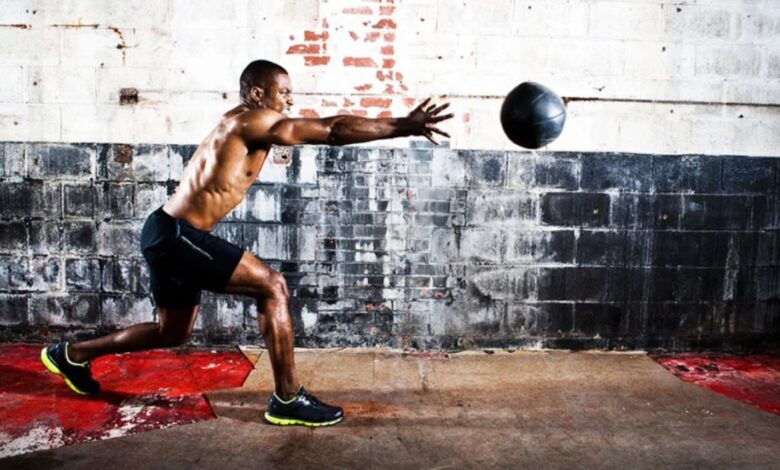Athlete Training and Conditioning Techniques

In the world of sports, athletes need to be in top physical shape to perform at their best. Whether it’s running, jumping, lifting, or any other athletic activity, training, and conditioning play a crucial role in an athlete’s success. This article will discuss various athlete training and conditioning techniques that can help them improve their performance and prevent injuries.
Understanding the Basics of Training and Conditioning
Before diving into the specifics, it’s important to understand the basic principles of training and conditioning. These principles include overload, specificity, reversibility, and individual differences.
Overload
Overload refers to the principle that athletes need to challenge their bodies beyond what they are accustomed to in order to see improvements. This can be done by increasing the intensity, frequency, or duration of their training.
Specificity
Specificity refers to the principle that athletes need to train in a way that is specific to their sport or activity. For example, a runner would focus more on endurance training, while a weightlifter would focus more on strength training.
Reversibility
Reversibility refers to the principle that if athletes stop training, their gains will be lost. It’s important for athletes to maintain a consistent training regimen to prevent reversibility.
Individual Differences
Individual differences refer to the fact that athletes respond differently to training and conditioning based on factors such as genetics, age, and gender. It’s important for coaches to tailor training programs to individual athletes.
Strength Training
Strength training is an essential part of athlete training and conditioning. It involves exercises that build strength and power in the muscles.
Compound Exercises
Compound exercises, such as squats, deadlifts, and bench presses, work for multiple muscle groups at once and are effective for building overall strength.
Plyometric Training
Plyometric training involves explosive movements, such as jumping and hopping, that help athletes develop power and speed.
Isometric Training
Isometric training involves holding a static position, such as a plank, to build strength and stability.
Resistance Bands
Resistance bands are portable and versatile tools that athletes can use for strength training.
Endurance Training
Endurance training is crucial for athletes who need to perform for extended periods of time. It involves exercises that improve cardiovascular fitness and muscular endurance.
Cardiovascular Exercise
Cardiovascular exercises, such as running, swimming, or cycling, help improve heart and lung function, allowing athletes to perform at higher intensities for longer periods.
High-Intensity Interval Training (HIIT)
HIIT involves short, intense bursts of exercise followed by periods of rest. It’s an effective way to improve endurance and burn fat.
Circuit Training
Circuit training involves performing a series of exercises in a circuit with little to no rest in between. It’s an effective way to improve both cardiovascular fitness and muscular endurance.
Flexibility Training
Flexibility training is often overlooked but is crucial for preventing injuries and improving athletic performance. It involves exercises that improve the range of motion and reduces muscle tension.
Static Stretching
Static stretching involves holding a stretch for a certain amount of time to improve flexibility.
Dynamic Stretching
Dynamic stretching involves moving through a range of motion to improve flexibility and prepare the body for exercise.
Yoga
Yoga is a form of exercise that involves stretching and strengthening the body while also promoting relaxation and stress relief.
Recovery Techniques
Recovery is just as important as training when it comes to athlete conditioning. Proper recovery techniques can help prevent injuries and improve performance.
Foam Rolling
Foam rolling involves using a foam roller to massage the muscles, which can help reduce muscle soreness and improve flexibility.
Massage
Massage can help improve circulation and reduce muscle tension, which can lead to faster recovery and improved performance.
Ice Baths
Ice baths, or cold-water immersion, can help reduce inflammation and muscle soreness, leading to faster recovery.
Active Recovery
Active recovery involves performing low-intensity exercises, such as walking or swimming, to help promote blood flow and reduce muscle soreness.
Nutrition and Hydration
Proper nutrition and hydration are crucial for athlete performance and recovery. Athletes need to fuel their bodies with the right nutrients to support their training and conditioning.
Protein
Protein is essential for muscle growth and repair. Athletes should aim to consume protein-rich foods such as lean meats, eggs, and legumes.
Carbohydrates
Carbohydrates are the body’s main source of energy. Athletes should consume complex carbohydrates such as whole grains and fruits.
Hydration
Proper hydration is crucial for athlete performance and recovery. Athletes should aim to drink enough water to replace fluids lost through sweat.
Injury Prevention
Injuries can derail an athlete’s training and conditioning. It’s important to take steps to prevent injuries before they happen.
Proper Warm-up and Cool-down
Proper warm-up and cool-down can help prevent injuries by preparing the body for exercise and reducing muscle soreness.
Proper Equipment
Proper equipment, such as shoes, helmets, and pads, can help prevent injuries by providing support and protection.
Rest and Recovery
Rest and recovery are essential for preventing injuries. Athletes should take time off from training and conditioning to allow their bodies to recover.



